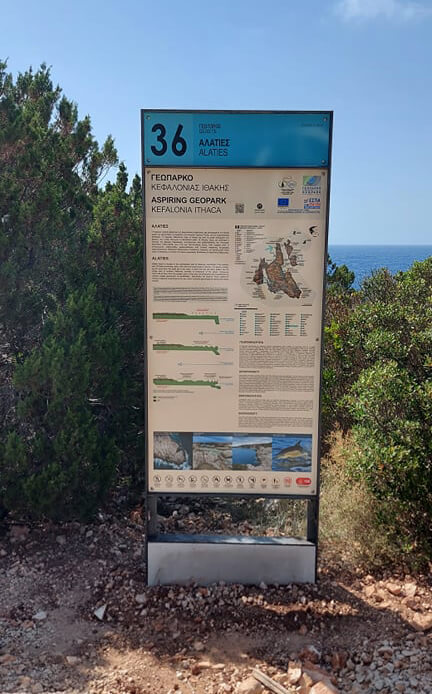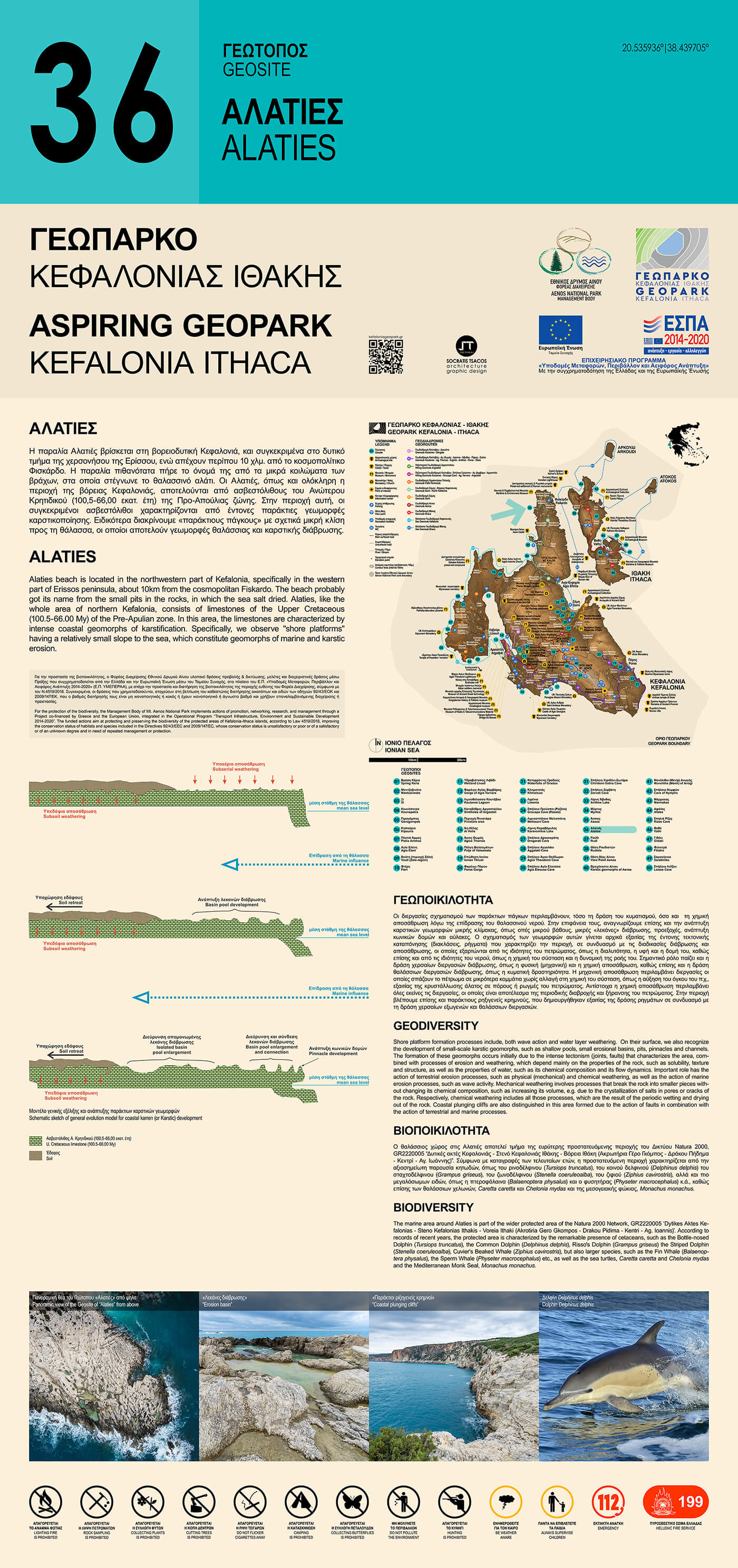Alaties beach is located in the northwestern part of Kefalonia, specifically in the western part of Erissos peninsula, about 10km from the cosmopolitan Fiskardo. The beach probably got its name from the small pits in the rocks, in which the sea salt dried. Alaties, like the whole area of northern Kefalonia, consists of limestones of the Upper Cretaceous (100.5-66.0 My) of the Pre-Apulian zone. In this area, the limestones are characterized by intense coastal geomorphs of karstification. Specifically, we observe "shore platforms" having a relatively small slope to the sea, which constitute geomorphs of marine and karstic erosion.

Geodiversity
Shore platform formation processes include, both wave action and water layer weathering. On their surface, we also recognize the development of small-scale karstic geomorphs, such as shallow pools, small erosional basins (Figure 2), pits, pinnacles and channels. The formation of these geomorphs occurs initially due to the intense tectonism (joints, faults) that characterizes the area, combined with processes of erosion and weathering, which depend mainly on the properties of the rock, such as solubility, texture and structure, as well as the properties of water, such as its chemical composition and its flow dynamics.

Ιmportant role has the action of terrestrial erosion processes, such as physical (mechanical) and chemical weathering, as well as the action of marine erosion processes, such as wave activity (Figure 3). Mechanical weathering involves processes that break the rock into smaller pieces without changing its chemical composition, such as increasing its volume, e.g. due to the crystallization of salts in pores or cracks of the rock. Respectively, chemical weathering includes all those processes, which are the result of the periodic wetting and drying out of the rock.

Coastal plunging cliffs are also distinguished in this area formed due to the action of faults in combination with the action of terrestrial and marine processes.

Biodiversity
Τhe marine area around Alaties is part of the wider protected area of the Natura 2000 Network, GR2220005 ‘Dytikes Aktes Kefalonias - Steno Kefalonias Ithakis - Voreia Ithaki (Akrotiria Gero Gkompos - Drakou Pidima - Kentri - Ag. Ioannis)’. According to records of recent years, the protected area is characterized by the remarkable presence of cetaceans, such as the Bottle-nosed Dolphin (Tursiops truncatus), the Common Dolphin (Delphinus delphis), Risso's Dolphin (Grampus griseus) the Striped Dolphin (Stenella coeruleoalba), Cuvier's Beaked Whale (Ziphius cavirostris), but also larger species, such as the Fin Whale (Balaenoptera physalus), the Sperm Whale (Physeter macrocephalus) etc., as well as the sea turtles, Caretta caretta and Chelonia mydas and the Mediterranean Monk Seal, Monachus monachus.


